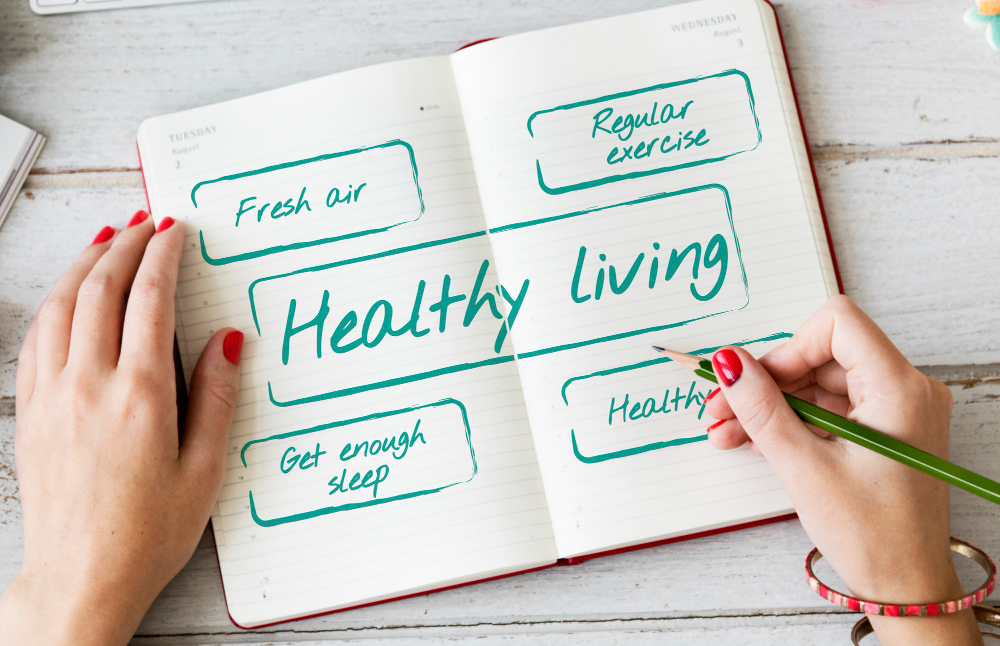What is a Sleep Diary ?
C’mon, we all know what a diary is!
But when a diary is specifically made to write down detailed information about everything that happens during our sleep time, we call in a Sleep diary.
It mainly focuses on the timings of your sleep-wake cycle, the frequency of your mid-night awakenings, food consumption before or during bedtime and other factors related to and around your snooze time. A typical sleep diary needs to be updated daily, usually for 2 weeks for a better assessment. It is a useful way to track your sleeping pattern and any discrepancy associated with it. Journaling this information will give you and your health care expert an overview of your sleep schedule. It is often preferred over gadgets and trackers as they tend to give only the objective information while a sleep diary can give more reliable and resourceful individual subjective information.
Benefits of a sleep diary
A sleep diary helps you to monitor your sleep patterns. More so, if you wish to consult a sleep expert in case of sleep deprivation due to sleep-related illnesses, this can serve as first-hand information about your current sleep schedule. It helps the doctor to understand your routine and may help them reach the root cause of your sleep problem.
The aim isn’t to become overly aware of it to the point where you’re constantly looking at the clock to fill in the details. It is beneficial when you put in as much accurate information as you possibly remember while going with the flow of your bedtime routine.
What information is needed for a good sleep diary?
Documenting the sleep diary every day is a prerequisite. As we progress through the day, our brain generally erases the night time memory. Hence it is best if it is journaled immediately or within an hour of waking up.
Some important information that needs to be filled in are,
- The time you went to bed
- Timing of sleep onset
- Time of midnight awakening – this may be several times and you must mention how many times you woke up; at what times and what time you could go back to sleep.
- Wake up time
- The time you got out of bed
Apart from this, there are some more aspects to consider,
- Kind of meal consumed and meal times
- Caffeine intake
- Alcohol intake
- Screen time – post going to bed
- Sex
- Nightmares or dreams
- Sleep walking
- Enuresis – or bedwetting especially in children
- Any other factor that happened that night, before or after sleeping, that you may want to tell your doctor.
There is no one format, as the schedule and so the problems may differ from person to person. You must try and put in as much information as possible related to the above in your own way.
However, just to make things a little easier and more objective for you or the sleep expert to understand the information in a much better way, you can refer to the printable Sleep diary template by AASM (American Academy of Sleep Medicine)
Analysis of a sleep diary
A sleep diary is the first and the most important source of information to find out if there is any sleep discrepancy. The doctor will generally consolidate a minimum of 2-week data and try to find out the core issue.
A few things that can be immediately determined are,
- Your sleep-wake timetable to determine the sleep schedule and sleep quantity.
- Your sleep hygiene (please provide the hyperlink here for the article “what is sleep hygiene) to determine the sleep quality.
Once the schedule, the quantity and the quality are determined, your health expert is in a better position to then understand why your sleep is getting compromised.
Based on the findings of the sleep diary there will be other tests conducted as the need may be to arrive at a conclusion for medical intervention.
- Questionnaires and scales
- Family / Medical History
- Physical examination
- Mental state examination
Best Sleep diary App – A new buzz on the Internet!
The internet is inundated with apps and devices that can make a ‘supposedly’ automatic Sleep diary for you. Some wristbands can track your heart rate and blood pressure, while some apps can identify your sleep pattern just by recording sounds that you make during the night. We are not sure how useful these can be in determining sleep quality effectively but we can surely say it’s a helpful way to get the quantitative details. It cannot replace the information that YOU can provide. A sleep doctor would rely more on the subjective data provided by you and may add the tracking device’s details as an additional help for a correct diagnosis.
However, we are excited to tell you that something is buzzing on the Internet these days. It’s the Withings Sleep tracking pad. This pad just needs to be placed under your mattress and it can track your heart rate, sleep-wake times, the amount of time you’ve been snoring and sleep phases. The most exciting part is Withings now adds a medical-grade sleep diary to its tracking mat which they claim will give more detailed and accurate data. You can check more information on
Sleep Tracking Mat – Sleep | Withings
“Everyone should have a form of a diary. It’s a great release” – Stanley Victor
In the world of automation, where everything is available at a click of an icon, there are still some things like a human sleep that need to be deconstructed and understood more humanly. A peaceful restorative sleep or the lack of it causes the symptoms that may be, the trackers and app can identify. But if you are willing to reach the root cause and resolve the underlying issue then a subjective sleep diary is a must. It not only helps the sleep expert diagnose the problem quickly and effectively, but it may also be a great release for yourself. Writing down what worries you, gives your brain a signal that says, ‘’I am aware, I am glad that you have accepted and I am here to solve it for you”. You may be surprised but just keeping a sleep diary might sometimes help you sleep better too as you realize what appears to be missing.



